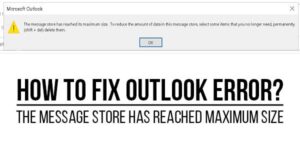
Companies that have a presence in the digital field have experience with the personalization of messages in various marketing channels. For example, email marketing sends personalized emails that target users in a segment of the target audience. Personalizing the experience of the company’s website in real-time is also now one of the most commonly used tactics. The question is whether companies will be able to apply what they have learned in the field of mobile applications.
The growth of mobile technology is extremely fast and more and more of your customers use their smartphones and tablets to find information. Recent studies show that 89% of the time users use media content is spent on mobile applications. This requires very company in the digital field to have an up-to-date strategy for its mobile application. While previous experience in targeting, testing, and customizing sites and other forms of online marketing is helpful, differences in the behavior of mobile application users need to be considered in order to build an effective strategy that targets them. Here are three key factors to consider on the road to personalization.
Table of Contents
1.) Get To Know Consumers And Their Desires:
In the field of mobile applications, the results are measured mainly by the number of users, the time spent on the application, the ratings in Google Play and the App Store, and the rate of conversion of users into customers. To achieve the desired results, it is necessary to offer functionalities and content that engages people and makes them come back again and again. However, to be effective, you need to treat consumers as individuals, not just trends in a chart.
The analysis of the data from the mobile application is the basis of the personalization of the user experience. You can take advantage of diverse and valuable information, such as the location of users, how long ago they opened the application for the last time, how long they stayed on it, and what was their way in it. Based on what you ‘ve learned, you can run personalized messages to guide users to specific places in the app so that they have direct access to content that interests them and that benefits them. This is a basic tactic for engaging and retaining the target audience.
It is important to take advantage of the two types of notifications that high-quality mobile applications offer. Push notifications are notifications that users receive from the app when they are not using it. Their goal is to get people to open the app. In-app notifications are notifications that users receive when they are in the application. When using both types of notifications, the focus should be on creating and conducting a conversation, not on inventing different one-time messages. For this purpose it is necessary to use three types of data:
- – General use of the application – When was the last time the user opened it and how long was the session?
- – Behavior – What did the user do or not in the application? Which screens did he see and which did he touch?
- – Demographic characteristics – To use the so-called back-end data that you have for the users in your CRM system, such as gender, age, and preferences, you need to integrate the channels that are their source with the application.

2.) Respond In Time: Calls Instead Of Single Messages:
Changing a message that is presented to a user according to his activity in real-time is already a tried and tested technique. In the world of mobile applications, you need to offer content that the person can connect to the screen they were on in the application and whether they took the actions you wanted.
In many cases, communication in the mobile application is based on a one-way flow of information when there is a message displayed by the application. Even if these key messages are personalized and delivered to specific segments of the target audience, they are one-time and have a clear and precise call to action, as opposed to a long conversation with the user, which can be useful, fun and educational at the same time.
The idea is to create user engagement streams within the application that are based on multi-step communication, including reflecting user feedback and responding accordingly. Ideally, the answer to each user will be individual. Let’s look at an example.
If you conduct a satisfaction survey with users of the mobile application and get a positive result from a user, you can send him an invitation to rate the application on Google Play and the App Store. If you get a negative result from another, you can send him a message asking for details or direct him to what he is looking for, if available on the app. These customer engagement communication streams are similar to email campaigns to build relationships with potential customers and help increase loyalty.
3.) Test, Experiment, And Optimize:
Continuous testing and optimization are at the heart of the development of any mobile application. You can do experiment with different variants of the presentation of the titles, the structure of the content, the layout of the screens, and the path of the user while making the process as efficient and productive as possible.
The same approach is applicable to building communication with your users. Factors to focus on include the frequency and timing of notifications, localization functionality within the app, and features specifically designed to engage users. Only with tests can you solve important questions about the experience, such as whether to add new users through a video guide for using the application or through a slide show. Optimization is the most effective way to realize the full potential of your mobile application.
Even when creating the conceptual design of the application, the functionalities for user engagement must be determined, which really makes people become customers of your company. They are the basis for personalizing the experience, which can only bring higher results. Therefore, marketing research at the initial stage of the project for the development of the application is invaluable.
The mobile application must have management tools through which to communicate, turn users into customers, and maintain relationships built on a personal level, without the need for direct involvement of the developer. The application must be built so that the developer is responsible for the technical operation of the functionalities, while marketing teams and those involved in product creation focus on the user experience. The goal is to achieve a high enough level of flexibility to meet consumer expectations at all times and to move towards deeper personalization.
The way to personalize the experience of a mobile application begins with the development of its conceptual design. The success in achieving a high level of personalization is based on the understanding, engagement, and satisfaction of users and the flawless operation of the functionalities of the application itself.
If you want to have a mobile app that offers a personalized experience and engages users so that it brings you direct benefits, contact us by sending an inquiry now.

 About the Author:
About the Author:
















Be the first to write a comment.